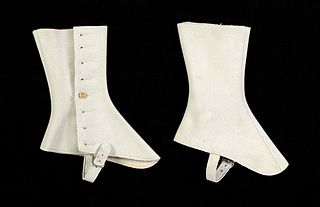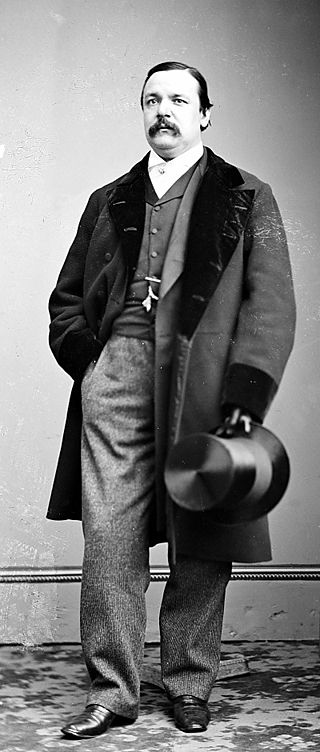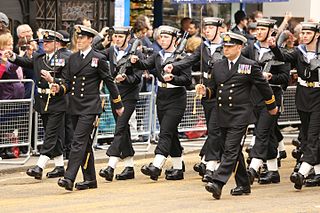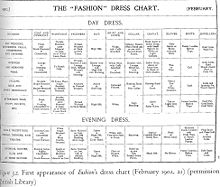
Black tie is a semi-formal Western dress code for evening events, originating in British and North American conventions for attire in the 19th century. In British English, the dress code is often referred to synecdochically by its principal element for men, the dinner suit or dinner jacket. In American English, the equivalent term tuxedo is common. The dinner suit is a black, midnight blue or white two- or three-piece suit, distinguished by satin or grosgrain jacket lapels and similar stripes along the outseam of the trousers. It is worn with a white dress shirt with standing or turndown collar and link cuffs, a black bow tie, typically an evening waistcoat or a cummerbund, and black patent leather dress shoes or court pumps. Accessories may include a semi-formal homburg, bowler, or boater hat. For women, an evening gown or other fashionable evening attire may be worn.

White tie, also called full evening dress or a dress suit, is the most formal evening Western dress code. For men, it consists of a black tail coat worn over a white dress shirt with a starched or pique bib, white piqué waistcoat and the white bow tie worn around a standing wing collar. Mid or high-waisted black trousers with galon, a braid of trim consisting of two silk stripes to conceal the outer seams of the trousers, along with court shoes complete the outfit. Orders, decorations and medals may be worn. Acceptable accessories include a black top hat, white gloves, a white scarf, a pocket watch, a white pocket square, and a boutonnière. Women wear full-length ball or evening gowns with evening gloves and, optionally, tiaras, jewellery, and a small handbag.

A top hat is a tall, flat-crowned hat traditionally associated with formal wear in Western dress codes, meaning white tie, morning dress, or frock coat. Traditionally made of black silk or sometimes grey, the top hat emerged in Western fashion by the end of the 18th century. Although it declined by the time of the counterculture of the 1960s, it remains a formal fashion accessory. A collapsible variant of a top hat, developed in the 19th century, is known as an opera hat.

Formal wear or full dress is the Western dress code category applicable for the most formal occasions, such as weddings, christenings, confirmations, funerals, Easter and Christmas traditions, in addition to certain state dinners, audiences, balls, and horse racing events. Generally permitted other alternatives, though, are the most formal versions of ceremonial dresses, full dress uniforms, religious clothing, national costumes, and most rarely frock coats. In addition, formal wear is often instructed to be worn with official full size orders and medals.

A frock coat is a formal men's coat characterised by a knee-length skirt cut all around the base just above the knee, popular during the Victorian and Edwardian periods (1830s–1910s). It is a fitted, long-sleeved coat with a centre vent at the back and some features unusual in post-Victorian dress. These include the reverse collar and lapels, where the outer edge of the lapel is often cut from a separate piece of cloth from the main body and also a high degree of waist suppression around the waistcoat, where the coat's diameter round the waist is less than round the chest. This is achieved by a high horizontal waist seam with side bodies, which are extra panels of fabric above the waist used to pull in the naturally cylindrical drape. As was usual with all coats in the 19th century, shoulder padding was rare or minimal.

Morning dress, also known as formal day dress, is the formal Western dress code for day attire, consisting chiefly of, for men, a morning coat, waistcoat, and formal trousers, and an appropriate gown for women. Men may also wear a popular variant where all parts are the same colour and material, often grey and usually called "morning suit" or "morning grey" to distinguish it; considered properly appropriate only to festive functions such as summer weddings and horse races, which consequently makes it slightly less formal. The correct hat would be a formal top hat, or if on less spacious audience settings optionally a collapsible equivalent opera hat.

A headscarf is a scarf covering most or all of the top of a person's, usually women's, hair and head, leaving the face uncovered. A headscarf is formed of a triangular cloth or a square cloth folded into a triangle, with which the head is covered.
Clerical clothing is non-liturgical clothing worn exclusively by clergy. It is distinct from vestments in that it is not reserved specifically for use in the liturgy. Practices vary: clerical clothing is sometimes worn under vestments, and sometimes as the everyday clothing or street wear of a priest, minister, or other clergy member. In some cases, it can be similar or identical to the habit of a monk or nun.

Spats, a shortening of spatterdashes, or spatter guards are a type of footwear accessory for outdoor wear, covering the instep and the ankle. Spats are distinct from gaiters, which are garments worn over the lower trouser leg as well as the shoe.
Semi-formal wear or half dress is a grouping of dress codes indicating the sort of clothes worn to events with a level of formality between informal wear and formal wear. In the modern era, the typical interpretation for men is black tie for evening wear and black lounge suit for day wear, corresponded by either a pant suit or an evening gown for women.

Fashion in the years 1750–1775 in European countries and the colonial Americas was characterised by greater abundance, elaboration and intricacy in clothing designs, loved by the Rococo artistic trends of the period. The French and English styles of fashion were very different from one another. French style was defined by elaborate court dress, colourful and rich in decoration, worn by such iconic fashion figures as Marie Antoinette.

Informal wear or undress, also called business wear, corporate/office wear, tenue de ville or dress clothes, is a Western dress code for clothing defined by a business suit for men, and cocktail dress or pant suit for women. On the scale of formality, it is considered less formal than semi-formal wear but more formal than casual wear. Informal or undress should not be confused with casual wear such as business casual or smart casual; most situations calling for “informal wear” will usually tolerate casual dress to varying extents.

The black lounge suit (UK), stroller (U.S.), or Stresemann, is a men's day attire semi-formal intermediate of a formal morning dress and an informal lounge suit; comprising grey striped or checked formal trousers, but distinguished by a conventional-length lounge jacket, single- or double-breasted in black, midnight blue or grey. This makes it largely identical to the formal morning dress from which it is derived, only having exchanged the morning coat with a suit jacket, yet with equivalent options otherwise, such as necktie or bowtie for neckwear, a waistcoat, French cuffs dress shirt of optional collar type, and black dress shoes or dress boots. The correct hat would be a semi-formal homburg, bowler, or boater hat. Just as morning dress is considered the formal daytime equivalent of formal evening attire dress coat i e. white tie, so the stroller is considered the semi-formal daytime equivalent of the semi-formal evening attire dinner jacket, i.e. black tie. Unlike other dress codes, there is no clear equivalent for women, though typical morning dress and cocktail dress have both been identified as alternatives.

An over-frock coat is a formal overcoat designed to be worn over a frock coat if needed in cold weather. A top-frock coat may also be worn over a frock coat in milder weather. Shaped like the body coats popular in the Victorian and Edwardian periods, the over-frock coat was cut in essentially the same way as the frock coat that was worn under it, although it would be larger overall to accommodate the frock-coat worn underneath. Like the frock coat, the over-frock would typically be single-breasted, with step lapels for informal occasions like business, and double-breasted with pointed lapels for formal occasions – weddings, funerals, balls, etc. The top-frock was usually double breasted. The formal variety was sometimes called a Prince Albert overcoat. The Prince Albert top frock, from the later half of the 19th century, originally had a three-inch-wide velvet collar, and flap pockets at the hip, until 1893, when it became even more fitted, longer, and double-breasted.

Fashion in the period 1900–1909 in the Western world continued the severe, long and elegant lines of the late 1890s. Tall, stiff collars characterize the period, as do women's broad hats and full "Gibson Girl" hairstyles. A new, columnar silhouette introduced by the couturiers of Paris late in the decade signaled the approaching abandonment of the corset as an indispensable garment.

The uniforms of the Royal Navy have evolved gradually since the first uniform regulations for officers were issued in 1748. The predominant colours of Royal Navy uniforms are navy blue and white. Since reforms in 1997 male and female ratings have worn the same ceremonial uniform.
Religious clothing is clothing which is worn in accordance with religious practice, tradition or significance to a faith group. It includes clerical clothing such as cassocks, and religious habit, robes, and other vestments. Accessories include hats, wedding rings, crucifixes, etc.
A man's suit of clothes, in the sense of a lounge or business or office suit, is a set of garments which are crafted from the same cloth. This article discusses the history of the lounge suit, often called a business suit when featuring dark colors and a conservative cut.

Headgear, headwear, or headdress is any element of clothing which is worn on one's head, including hats, helmets, turbans and many other types. Headgear is worn for many purposes, including protection against the elements, decoration, or for religious or cultural reasons, including social conventions.

Fashion in the twenty years between 1775 and 1795 in Western culture became simpler and less elaborate. These changes were a result of emerging modern ideals of selfhood, the declining fashionability of highly elaborate Rococo styles, and the widespread embrace of the rationalistic or "classical" ideals of Enlightenment philosophes.


















